Introduction
According to the World Health Organization (WHO), viral diseases continue to emerge and represent a serious issue to public health. In the last twenty years, several viral epidemics such as the severe acute respiratory syndrome coronavirus (SARS-CoV) in 2002 to 2003, and H1N1 influenza in 2009, have been recorded. Most recently, the Middle East respiratory syndrome coronavirus (MERS-CoV) was first identified in Saudi Arabia in 2012.
In a timeline that reaches the present day, an epidemic of cases with unexplained low respiratory infections detected in Wuhan, the largest metropolitan area in China's Hubei province, was first reported to the WHO Country Office in China, on December 31, 2019. Published literature can trace the beginning of symptomatic individuals back to the beginning of December 2019. As they were unable to identify the causative agent, these first cases were classified as "pneumonia of unknown etiology." The Chinese Center for Disease Control and Prevention (CDC) and local CDCs organized an intensive outbreak investigation program. The etiology of this illness is now attributed to a novel virus belonging to the coronavirus (CoV) family.
On February 11, 2020, the WHO Director-General, Dr. Tedros Adhanom Ghebreyesus, announced that the disease caused by this new CoV was a "COVID-19," which is the acronym of "coronavirus disease 2019". In the past twenty years, two additional coronavirus epidemics have occurred. SARS-CoV provoked a large-scale epidemic beginning in China and involving two dozen countries with approximately 8000 cases and 800 deaths, and the MERS-CoV that began in Saudi Arabia and has approximately 2,500 cases and 800 deaths and still causes as sporadic cases.
This new virus seems to be very contagious and has quickly spread globally. In a meeting on January 30, 2020, per the International Health Regulations (IHR, 2005), the outbreak was declared by the WHO a Public Health Emergency of International Concern (PHEIC) as it had spread to 18 countries with four countries reporting human-to-human transmission. An additional landmark occurred on February 26, 2020, as the first case of the disease, not imported from China, was recorded in the United States.
Initially, the new virus was called 2019-nCoV. Subsequently, the task of experts of the International Committee on Taxonomy of Viruses (ICTV) termed it the SARS-CoV-2 virus as it is very similar to the one that caused the SARS outbreak (SARS-CoVs).
The CoVs have become the major pathogens of emerging respiratory disease outbreaks. They are a large family of single-stranded RNA viruses (+ssRNA) that can be isolated in different animal species.[1] For reasons yet to be explained, these viruses can cross species barriers and can cause, in humans, illness ranging from the common cold to more severe diseases such as MERS and SARS. Interestingly, these latter viruses have probably originated from bats and then moving into other mammalian hosts — the Himalayan palm civet for SARS-CoV, and the dromedary camel for MERS-CoV — before jumping to humans. The dynamics of SARS-Cov-2 are currently unknown, but there is speculation that it also has an animal origin.
The potential for these viruses to grow to become a pandemic worldwide seems to be a serious public health risk. Concerning COVID-19, the WHO raised the threat to the CoV epidemic to the "very high" level, on February 28, 2020. Probably, the effects of the epidemic caused by the new CoV has yet to emerge as the situation is quickly evolving. On March 11, as the number of COVID-19 cases outside China has increased 13 times and the number of countries involved has tripled with more than 118,000 cases in 114 countries and over 4,000 deaths, WHO declared the COVID-19 a pandemic.
World governments are at work to establish countermeasures to stem possible devastating effects. Health organizations coordinate information flows and issues directives and guidelines to best mitigate the impact of the threat. At the same time, scientists around the world work tirelessly, and information about the transmission mechanisms, the clinical spectrum of disease, new diagnostics, and prevention and therapeutic strategies are rapidly developing. Many uncertainties remain with regard to both the virus-host interaction and the evolution of the epidemic, with specific reference to the times when the epidemic will reach its peak.
At the moment, the therapeutic strategies to deal with the infection are only supportive, and prevention aimed at reducing transmission in the community is our best weapon. Aggressive isolation measures in China have led to a progressive reduction of cases in the last few days. In Italy, in geographic regions of the north, initially, and subsequently throughout the peninsula, political and health authorities are making incredible efforts to contain a shock wave that is severely testing the health system.
In the midst of the crisis, the authors have chosen to use the "Statpearls" platform because, within the PubMed scenario, it represents a unique tool that may allow them to make updates in real-time. The aim, therefore, is to collect information and scientific evidence and to provide an overview of the topic that will be continuously updated.
Etiology
CoVs are positive-stranded RNA viruses with a crown-like appearance under an electron microscope (coronam is the Latin term for crown) due to the presence of spike glycoproteins on the envelope. The subfamily Orthocoronavirinae of the Coronaviridae family (order Nidovirales) classifies into four genera of CoVs: Alphacoronavirus (alphaCoV), Betacoronavirus (betaCoV), Deltacoronavirus (deltaCoV), and Gammacoronavirus (gammaCoV). Furthermore, the betaCoV genus divides into five sub-genera or lineages.[2] Genomic characterization has shown that probably bats and rodents are the gene sources of alphaCoVs and betaCoVs. On the contrary, avian species seem to represent the gene sources of deltaCoVs and gammaCoVs.
Members of this large family of viruses can cause respiratory, enteric, hepatic, and neurological diseases in different animal species, including camels, cattle, cats, and bats. To date, seven human CoVs (HCoVs) — capable of infecting humans — have been identified. Some of HCoVs were identified in the mid-1960s, while others were only detected in the new millennium.
In general, estimates suggest that 2% of the population are healthy carriers of a CoV and that these viruses are responsible for about 5% to 10% of acute respiratory infections.[3]
-
Common human CoVs: HCoV-OC43, and HCoV-HKU1 (betaCoVs of the A lineage); HCoV-229E, and HCoV-NL63 (alphaCoVs). They can cause common colds and self-limiting upper respiratory infections in immunocompetent individuals. In immunocompromised subjects and the elderly, lower respiratory tract infections can occur.
-
Other human CoVs: SARS-CoV, SARS-CoV-2, and MERS-CoV (betaCoVs of the B and C lineage, respectively). These cause epidemics with variable clinical severity featuring respiratory and extra-respiratory manifestations. Concerning SARS-CoV, MERS-CoV, the mortality rates are up to 10% and 35%, respectively.
Thus, SARS-CoV-2 belongs to the betaCoVs category. It has round or elliptic and often pleomorphic form, and a diameter of approximately 60–140 nm. Like other CoVs, it is sensitive to ultraviolet rays and heat. Furthermore, these viruses can be effectively inactivated by lipid solvents including ether (75%), ethanol, chlorine-containing disinfectant, peroxyacetic acid and chloroform except for chlorhexidine.
In genetic terms, Chan et al. have proven that the genome of the new HCoV, isolated from a cluster-patient with atypical pneumonia after visiting Wuhan, had 89% nucleotide identity with bat SARS-like-CoVZXC21 and 82% with that of human SARS-CoV[4]. For this reason, the new virus was called SARS-CoV-2. Its single-stranded RNA genome contains 29891 nucleotides, encoding for 9860 amino acids. Although its origins are not entirely understood, these genomic analyses suggest that SARS-CoV-2 probably evolved from a strain found in bats. The potential amplifying mammalian host, intermediate between bats and humans, is, however, not known. Since the mutation in the original strain could have directly triggered virulence towards humans, it is not certain that this intermediary exists.
Transmission
Because the first cases of the CoVID-19 disease were linked to direct exposure to the Huanan Seafood Wholesale Market of Wuhan, the animal-to-human transmission was presumed as the main mechanism. Nevertheless, subsequent cases were not associated with this exposure mechanism. Therefore, it was concluded that the virus could also be transmitted from human-to-human, and symptomatic people are the most frequent source of COVID-19 spread. The possibility of transmission before symptoms develop seems to be infrequent, although it cannot be excluded. Moreover, there are suggestions that individuals who remain asymptomatic could transmit the virus. This data suggests that the use of isolation is the best way to contain this epidemic.
As with other respiratory pathogens, including flu and rhinovirus, the transmission is believed to occur through respiratory droplets from coughing and sneezing. Aerosol transmission is also possible in case of protracted exposure to elevated aerosol concentrations in closed spaces. Analysis of data related to the spread of SARS-CoV-2 in China seems to indicate that close contact between individuals is necessary. The spread, in fact, is primarily limited to family members, healthcare professionals, and other close contacts.
Based on data from the first cases in Wuhan and investigations conducted by the China CDC and local CDCs, the incubation time could be generally within 3 to 7 days and up to 2 weeks as the longest time from infection to symptoms was 12.5 days (95% CI, 9.2 to 18).[5] This data also showed that this novel epidemic doubled about every seven days, whereas the basic reproduction number (R0 - R naught) is 2.2. In other words, on average, each patient transmits the infection to an additional 2.2 individuals. Of note, estimations of the R0 of the SARS-CoV epidemic in 2002-2003 were approximately 3.[6]
It must be emphasized that this information is the result of the first reports. Thus, further studies are needed to understand the mechanisms of transmission, the incubation times and the clinical course, and the duration of infectivity.
Epidemiology
Data provided by the WHO Health Emergency Dashboard (March 14, 06.00 am CET) report 142.320 confirmed cases worldwide since the beginning of the epidemic. 5.388 (3.78%) cases have been fatal.
In china, 81.021 (57%) cases confirmed clinically and in the laboratory, and 3.173 deaths are reported. In addition to China, there are 61.299 confirmed cases in 129 other countries. The countries with most cases are Italy (17.660) and the Islamic Republic of Iran (11.364). The epidemiological scenario, therefore, has drastically changed, as on March 3 about 92% (79.968) of the confirmed cases were recorded in China, where almost all the deaths were also recorded (2,873, 96.5%). Of note, the "confirmed" cases reported between February 13, 2020, and February 19, 2020, include both laboratory-confirmed and clinically diagnosed patients from the Hubei province.
The most up-to-date source for the epidemiology of this emerging pandemic can be found at the following sources:
-
The WHO Novel Coronavirus (COVID-19) Situation Board
-
The Johns Hopkins Center for Systems Science and Engineering site for Coronavirus Global Cases COVID-19, which uses openly public sources to track the spread of the epidemic.
Pathophysiology
CoVs are enveloped, positive-stranded RNA viruses with nucleocapsid. For addressing pathogenetic mechanisms of SARS-CoV-2, its viral structure, and genome must be considerations. In CoVs, the genomic structure is organized in a +ssRNA of approximately 30 kb in length — the largest known RNA viruses — and with a 5′-cap structure and 3′-poly-A tail. Starting from the viral RNA, the synthesis of polyprotein 1a/1ab (pp1a/pp1ab) in the host is realized. The transcription works through the replication-transcription complex (RCT) organized in double-membrane vesicles and via the synthesis of subgenomic RNAs (sgRNAs) sequences. Of note, transcription termination occurs at transcription regulatory sequences, located between the so-called open reading frames (ORFs) that work as templates for the production of subgenomic mRNAs. In the atypical CoV genome, at least six ORFs can be present. Among these, a frameshift between ORF1a and ORF1b guides the production of both pp1a and pp1ab polypeptides that are processed by virally encoded chymotrypsin-like protease (3CLpro) or main protease (Mpro), as well as one or two papain-like proteases for producing 16 non-structural proteins (nsps). Apart from ORF1a and ORF1b, other ORFs encode for structural proteins, including spike, membrane, envelope, and nucleocapsid proteins.[1] and accessory proteic chains. Different CoVs present special structural and accessory proteins translated by dedicated sgRNAs.
Pathophysiology and virulence mechanisms of CoVs, and therefore also of SARS-CoV-2 have links to the function of the nsps and structural proteins. For instance, research underlined that nsp is able to block the host innate immune response.[7] Among functions of structural proteins, the envelope has a crucial role in virus pathogenicity as it promotes viral assembly and release. However, many of these features (e.g., those of nsp 2, and 11) have not yet been described.
Among the structural elements of CoVs, there are the spike glycoproteins composed of two subunits (S1 and S2). Homotrimers of S proteins compose the spikes on the viral surface, guiding the link to host receptors.[8] Of note, in SARS-CoV-2, the S2 subunit — containing a fusion peptide, a transmembrane domain, and cytoplasmic domain — is highly conserved. Thus, it could be a target for antiviral (anti-S2) compounds. On the contrary, the spike receptor-binding domain presents only a 40% amino acid identity with other SARS-CoVs. Other structural elements on which research must necessarily focus are the ORF3b that has no homology with that of SARS-CoVs and a secreted protein (encoded by ORF8), which is structurally different from those of SARS-CoV.
In international gene banks such as GenBank, researchers have published several Sars-CoV-2 gene sequences. This gene mapping is of fundamental importance allowing researchers to trace the phylogenetic tree of the virus and, above all, the recognition of strains that differ according to the mutations. According to recent research, a spike mutation, which probably occurred in late November 2019, triggered jumping to humans. In particular, Angeletti et al. compared the Sars-Cov-2 gene sequence with that of Sars-CoV. They analyzed the transmembrane helical segments in the ORF1ab encoded 2 (nsp2) and nsp3 and found that position 723 presents a serine instead of a glycine residue, while the position 1010 is occupied by proline instead of isoleucine.[9] The matter of viral mutations is key for explaining potential disease relapses.
Research will be needed to determine the structural characteristics of SARS-COV-2 that underlie the pathogenetic mechanisms. Compared to SARS, for example, initial clinical data show less extra respiratory involvement, although due to the lack of extensive data, it is not possible to draw definitive clinical information.
The pathogenic mechanism that produces pneumonia seems to be particularly complex. Clinical and preclinical research will have to explain many aspects that underlie the particular clinical presentations of the disease. The data so far available seem to indicate that the viral infection is capable of producing an excessive immune reaction in the host. In some cases, a reaction takes place which as a whole is labeled a 'cytokine storm'. The effect is extensive tissue damage. The protagonist of this storm is interleukin 6 (IL-6). IL-6 is produced by activated leukocytes and acts on a large number of cells and tissues. It is able to promote the differentiation of B lymphocytes, promotes the growth of some categories of cells, and inhibits the growth of others. It also stimulates the production of acute phase proteins and plays an important role in thermoregulation, in bone maintenance and in the functionality of the central nervous system. Although the main role played by IL-6 is pro-inflammatory, it can also have anti-inflammatory effects. In turn, IL-6 increases during inflammatory diseases, infections, autoimmune disorders, cardiovascular diseases and some types of cancer. It is also implicated into the pathogenesis of the cytokine release syndrome (CRS) that is an acute systemic inflammatory syndrome characterized by fever and multiple organ dysfunction.
Histopathology
Tian et al.[10] and others reported histopathological data obtained on the lungs of two patients who underwent lung lobectomies for adenocarcinoma and retrospectively found to have had the infection at the time of surgery. Apart from the tumors, the lungs of both 'accidental' cases showed edema and important proteinaceous exudates as large protein globules. The authors also reported vascular congestion combined with inflammatory clusters of fibrinoid material and multinucleated giant cells and hyperplasia of pneumocytes.
History and Physical
The clinical spectrum of COVID-19 varies from asymptomatic or paucisymptomatic forms to clinical conditions characterized by respiratory failure that necessitates mechanical ventilation and support in an intensive care unit (ICU), to multiorgan and systemic manifestations in terms of sepsis, septic shock, and multiple organ dysfunction syndromes (MODS). In one of the first reports on the disease, Huang et al. illustrated that patients (n. 41) suffered from fever, malaise, dry cough, and dyspnea. Chest computerized tomography (CT) scans showed pneumonia with abnormal findings in all cases. About a third of those (13, 32%) required ICU care, and there were 6 (15%) fatal cases.[11]
The case studies of Li et al. published in the New England Journal of Medicine (NEJM) on January 29, 2020, encapsulates the first 425 cases recorded in Wuhan.[5] Data indicate that the patients' median age was 59 years, with a range of 15 to 89 years. Thus, they reported no clinical cases in children below 15 years of age. There were no significant gender differences (56% male). Clinical and epidemiological data from the Chinese CDC and regarding 72,314 case records (confirmed, suspected, diagnosed, and asymptomatic cases) were shared in the Journal of the American Medical Association (JAMA) (February 24, 2020), providing an important illustration of the epidemiologic curve of the Chinese outbreak.[12] There were 62% confirmed cases, including 1% of cases that were asymptomatic, but were laboratory-positive (viral nucleic acid test). Furthermore, the overall case-fatality rate (on confirmed cases) was 2.3%. Of note, the fatal cases were primarily elderly patients, in particular those aged ≥ 80 years (about 15%), and 70 to 79 years (8.0%). Approximately half (49.0%) of the critical patients and affected by preexisting comorbidities such as cardiovascular disease, diabetes, chronic respiratory disease, and oncological diseases, died. While 1% of patients were aged 9 years or younger, no fatal cases occurred in this group.
The authors of the Chinese CDC report divided the clinical manifestations of the disease by there severity:
-
Mild disease: non-pneumonia and mild pneumonia; this occurred in 81% of cases.
-
Severe disease: dyspnea, respiratory frequency ≥ 30/min, blood oxygen saturation (SpO2) ≤ 93%, PaO2/FiO2 ratio or P/F [the ratio between the blood pressure of the oxygen (partial pressure of oxygen, PaO2) and the percentage of oxygen supplied (fraction of inspired oxygen, FiO2)] < 300, and/or lung infiltrates > 50% within 24 to 48 hours; this occurred in 14% of cases.
-
Critical disease: respiratory failure, septic shock, and/or multiple organ dysfunction (MOD) or failure (MOF); this occurred in 5% of cases.[12]
Data obtainable from reports and directives provided by health policy agencies, allow dividing the clinical manifestations of the disease according to the severity of the clinical pictures. The COVID-19 may present with mild, moderate, or severe illness. Among the severe clinical manifestations, there are severe pneumonia, ARDS, sepsis, and septic shock. The clinical course of the disease seems to predict a favorable trend in the majority of patients. In a percentage still to be defined of cases, after about a week there is a sudden worsening of clinical conditions with rapidly worsening respiratory failure and MOD/MOF. As a reference, the criteria of the severity of respiratory insufficiency and the diagnostic criteria of sepsis and septic shock can be used.[13]
Uncomplicated (mild) Illness
These patients usually present with symptoms of an upper respiratory tract viral infection, including mild fever, cough (dry), sore throat, nasal congestion, malaise, headache, muscle pain, or malaise. Signs and symptoms of a more serious disease, such as dyspnea, are not present. Compared to previous HCoV infections, non-respiratory symptoms such as diarrhea are challenging to find.
Moderate Pneumonia
Respiratory symptoms such as cough and shortness of breath (or tachypnea in children) are present without signs of severe pneumonia.
Severe Pneumonia
Fever is associated with severe dyspnea, respiratory distress, tachypnea (> 30 breaths/min), and hypoxia (SpO2 < 90% on room air). However, the fever symptom must be interpreted carefully as even in severe forms of the disease, it can be moderate or even absent. Cyanosis can occur in children. In this definition, the diagnosis is clinical, and radiologic imaging is used for excluding complications.
Acute Respiratory Distress Syndrome (ARDS)
The diagnosis requires clinical and ventilatory criteria. This syndrome is suggestive of a serious new-onset respiratory failure or for worsening of an already identified respiratory picture. Different forms of ARDS are distinguished based on the degree of hypoxia. The reference parameter is the PaO2/FiO2:
-
Mild ARDS: 200 mmHg < PaO2/FiO2 ≤ 300 mmHg. In not-ventilated patients or in those managed through non-invasive ventilation (NIV) by using positive end-expiratorypressure (PEEP) or a continuous positive airway pressure (CPAP) ≥ 5 cmH2O.
-
Moderate ARDS: 100 mmHg < PaO2/FiO2 ≤ 200 mmHg.
-
Severe ARDS: PaO2/FiO2 ≤ 100 mmHg.
When PaO2 is not available, a ratio SpO2/FiO2 ≤ 315 is suggestive of ARDS.
Chest imaging utilized includes chest radiograph, CT scan, or lung ultrasound demonstrating bilateral opacities (lung infiltrates > 50%), not fully explained by effusions, lobar, or lung collapse. Although in some cases, the clinical scenario and ventilator data could be suggestive for pulmonary edema, the primary respiratory origin of the edema is proven after the exclusion of cardiac failure or other causes such as fluid overload. Echocardiography can be helpful for this purpose.
Sepsis
According to the International Consensus Definitions for Sepsis and Septic Shock (Sepsis-3), sepsis represents a life-threatening organ dysfunction caused by a dysregulated host response to suspected or proven infection, with organ dysfunction.[14] The clinical pictures of patients with COVID-19 and with sepsis are particularly serious, characterized by a wide range of signs and symptoms of multiorgan involvement. These signs and symptoms include respiratory manifestations such as severe dyspnea and hypoxemia, renal impairment with reduced urine output, tachycardia, altered mental status, and functional alterations of organs expressed as laboratory data of hyperbilirubinemia, acidosis, high lactate, coagulopathy, and thrombocytopenia. The reference for the evaluation of multiorgan damage and the related prognostic significance is the Sequential Organ Failure Assessment (SOFA) score, which predicts ICU mortality based on lab results and clinical data.[15] A pediatric version of the score has also received validation.[16]Septic Shock
In this scenario, which is associated with increased mortality, circulatory, and cellular/metabolic abnormalities such as serum lactate level greater than 2 mmol/L (18 mg/dL) are present. Because patients usually suffer from persisting hypotension despite volume resuscitation, the administration of vasopressors is required to maintain a mean arterial pressure (MAP) ≥ 65 mmHg.
THE PECULIAR HISTORY OF THIS NEW DISEASEIn some patients, the clinical history of this disease occurs with particular characteristics. It foresees that the patient manifests above all fever, which is not very responsive to antipyretics, and a state of malaise. A dry cough is often associated. After 5-7 days, older patients with already impaired lung function begin to experience shortness of breath and increased respiratory rate. In more fragile patients, however, dyspnea may already appear at the onset of symptoms. On the other hand, in younger subjects and in those who do not have basic respiratory impairments or other comorbidities, dyspnea may appear later. In these patients experiencing worsening inflammatory-induced lung injury, there is a decrease in oxygen saturation (<93%). This seems to be the crucial phase of the disease, from this point onwards, there may be a rapid deterioration of respiratory functions. The scenario is truly incredible because for patients who are paucisymptomatic and slightly hypoxic, the first therapeutic approach is oxygen therapy. Although this strategy is effective, worsening of respiratory failure may occur in some patients. With the drive preserved, the next step, according to logic, is the NIV. This therapy has a rapid success by increasing the P/F. In some patients, however, there is a sudden, unexpected worsening of clinical conditions. Patients collapse under the operator's eyes and require rapid intubation and invasive mechanical ventilation. However, after 24-48 hours the patient can have a rapid improvement with an increase in P/F. Operators are therefore tempted to proceed with weaning. But very often, after an initial success there is a new worsening of respiratory conditions, such as to require a new invasive therapy. Therefore, mechanical ventilation has also been suggested for 1-2 weeks.
THE MESSAGE FOR THOSE WHO TREAT THESE PATIENTS IS THEREFORE TO FOLLOW THE CLINICAL PERFORMANCE FOCUSING ESPECIALLY ON THE VALUES OF THE SATURIMETRY, RATHER THAN CONSIDERING THE TYPICAL P/F VALUES SUGGESTIVE OF ARDS.
Evaluation
Most countries are utilizing some type of clinical and epidemiologic information to determine who should have testing performed. In the United States, criteria have been developed for persons under investigation (PUI) for COVID-19. According to the U.S. CDC, most patients with confirmed COVID-19 have developed fever and/or symptoms of acute respiratory illness (e.g., cough, difficulty breathing). If a person is a PUI, it is recommended that practitioners immediately put in place infection control and prevention measures. Initially, they recommend testing for all other sources of respiratory infection. Additionally, they recommend using epidemiologic factors to assist in decision making. There are epidemiologic factors that assist in the decision on who to test. This includes anyone who has had close contact with a patient with laboratory-confirmed COVID-19 within 14 days of symptom onset or a history of travel from affected geographic areas (presently China, Italy, Iran, Japan, and South Korea) within 14 days of symptom onset.
The WHO recommends collecting specimens from both the upper respiratory tract (naso- and oropharyngeal samples) and lower respiratory tract such as expectorated sputum, endotracheal aspirate, or bronchoalveolar lavage. The collection of BAL samples should only be performed in mechanically ventilated patients as lower respiratory tract samples seem to remain positive for a more extended period. The samples require storage at four degrees celsius. In the laboratory, amplification of the genetic material extracted from the saliva or mucus sample is through a reverse polymerase chain reaction (RT-PCR), which involves the synthesis of a double-stranded DNA molecule from an RNA mold. Once the genetic material is sufficient, the search is for those portions of the genetic code of the CoV that are conserved. The probes used are based on the initial gene sequence released by the Shanghai Public Health Clinical Center & School of Public Health, Fudan University, Shanghai, China on Virological.org, and subsequent confirmatory evaluation by additional labs. If the test result is positive, it is recommended that the test is repeated for verification. In patients with confirmed COVID-19 diagnosis, the laboratory evaluation should be repeated to evaluate for viral clearance prior to being released from observation.
The availability of testing will vary based on which country a person lives in with increasing availability occurring nearly daily.
Concerning laboratory examinations, in the early stage of the disease, a normal or decreased total white blood cell count and a decreased lymphocyte count can be demonstrated. Lymphopenia appears to be a negative prognostic factor. Increased values of liver enzymes, LDH, muscle enzymes, and C-reactive protein can be found. There is a normal procalcitonin value. In critical patients, D-dimer value is increased, blood lymphocytes decreased persistently, and laboratory alterations of multiorgan imbalance (high amylase, coagulation disorders, etc.) are found.
Treatment / Management
There is no specific antiviral treatment recommended for COVID-19, and no vaccine is currently available. The treatment is symptomatic, and oxygen therapy represents the major treatment intervention for patients with severe infection. Mechanical ventilation may be necessary in cases of respiratory failure refractory to oxygen therapy, whereas hemodynamic support is essential for managing septic shock.
On January 28, 2020, the WHO released a document summarizing WHO guidelines and scientific evidence derived from the treatment of previous epidemics from HCoVs. This document addresses measures for recognizing and sorting patients with severe acute respiratory disease; strategies for infection prevention and control; early supportive therapy and monitoring; a guideline for laboratory diagnosis; management of respiratory failure and ARDS; management of septic shock; prevention of complications; treatments; and considerations for pregnant patients.
Among these recommendations, we report the strategies for addressing respiratory failure, including protective mechanical ventilation and high-flow nasal oxygen (HFNO) or non-invasive ventilation (NIV).
Intubation and protective mechanical ventilation
Special precautions are necessary during intubation. The procedure should be executed by an expert operator who uses personal protective equipment (PPE) such as FFP3 or N95 mask, protective goggles, disposable gown long sleeve raincoat, disposable double socks, and gloves. If possible, rapid sequence intubation (RSI) should be performed. Preoxygenation (100% O2 for 5 minutes) should be performed via the continuous positive airway pressure (CPAP) method. Heat and moisture exchanger (HME) must be positioned between the mask and the circuit of the fan or between the mask and the ventilation balloon.
Mechanical ventilation should be with lower tidal volumes (4 to 6 ml/kg predicted body weight, PBW) and lower inspiratory pressures, reaching a plateau pressure (Pplat) < 28 to 30 cm H2O. PEEP must be as high as possible to maintain the driving pressure (Pplat-PEEP) as low as possible (< 14 cmH2O). Moreover, disconnections from the ventilator must be avoided for preventing loss of PEEP and atelectasis. Finally, the use of paralytics is not recommended unless PaO2/FiO2 < 150 mmHg. The prone ventilation for > 12 hours per day, and the use of a conservative fluid management strategy for ARDS patients without tissue hypoperfusion (strong recommendation) are emphasized.
Non-invasive ventilation
Concerning HFNO or non-invasive ventilation (NIV), the experts' panel, points out that these approaches performed by systems with good interface fitting do not create widespread dispersion of exhaled air, and their use can be considered at low risk of airborne transmission.[17] Practically, non-invasive techniques can be used in non-severe forms of respiratory failure. However, if the scenario does not improve or even worsen within a short period of time (1–2 hours) the mechanical ventilation must be preferred.
Other therapies
Among other therapeutic strategies, systemic corticosteroids for the treatment of viral pneumonia or acute respiratory distress syndrome (ARDS) are not recommended. Moreover, unselective or inappropriate administration of antibiotics should be avoided, although some centers recommend it. Although no antiviral treatments have been approved, several approaches have been proposed such as lopinavir/ritonavir (400/100 mg every 12 hours), chloroquine (500 mg every 12 hours), and hydroxychloroquine (200 mg every 12 hours). Alpha-interferon (e.g., 5 million units by aerosol inhalation twice per day) is also used.
Preclinical studies suggested that remdesivir (GS5734) — an inhibitor of RNA polymerase with in vitro activity against multiple RNA viruses, including Ebola — could be effective for both prophylaxis and therapy of HCoVs infections.[18] This drug was positively tested in a rhesus macaque model of MERS-CoV infection.[19]
In Italy, a great investigation led by the Istituto Nazionale Tumori, Fondazione Pascale di Napoli is focused on the use of tolicizumab. It is a humanized IgG1 monoclonal antibody, directed against the IL-6 receptor and commonly used in the treatment of rheumatoid arthritis.
When the disease results in complex clinical pictures of MOD, organ function support in addition to respiratory support, is mandatory. Extracorporeal membrane oxygenation (ECMO) for patients with refractory hypoxemia despite lung-protective ventilation should merit consideration after a case-by-case analysis. It can be suggested for those with poor results to prone position ventilation.
Prevention
Preventive measures are the current strategy to limit the spread of cases. Because an epidemic will increase as long as R0 is greater than 1 (COVID-19 is 2.2), control measures must focus on reducing the value to less than 1.
Preventive strategies are focused on the isolation of patients and careful infection control, including appropriate measures to be adopted during the diagnosis and the provision of clinical care to an infected patient. For instance, droplet, contact, and airborne precautions should be adopted during specimen collection, and sputum induction should be avoided.
The WHO and other organizations have issued the following general recommendations:
-
Avoid close contact with subjects suffering from acute respiratory infections.
-
Wash your hands frequently, especially after contact with infected people or their environment.
-
Avoid unprotected contact with farm or wild animals.
-
People with symptoms of acute airway infection should keep their distance, cover coughs or sneezes with disposable tissues or clothes and wash their hands.
-
Strengthen, in particular, in emergency medicine departments, the application of strict hygiene measures for the prevention and control of infections.
-
Individuals that are immunocompromised should avoid public gatherings.
The most important strategy for the populous to undertake is to frequently wash their hands and use portable hand sanitizer and avoid contact with their face and mouth after interacting with a possibly contaminated environment.
Healthcare workers caring for infected individuals should utilize contact and airborne precautions to include PPE such as N95 or FFP3 masks, eye protection, gowns, and gloves to prevent transmission of the pathogen.
Meanwhile, scientific research is growing to develop a coronavirus vaccine. In recent days, China has announced the first animal tests, and researchers from the University of Queensland in Australia have also announced that, after completing the three-week in vitro study, they are moving on to animal testing. Furthermore, in the U.S., the National Institute for Allergy and Infectious Diseases (NIAID) has announced that a phase 1 trial has begun for a novel coronavirus immunization in Washington state.
Differential Diagnosis
The symptoms of the early stages of the disease are nonspecific. Differential diagnosis should include the possibility of a wide range of infectious and non-infectious (e.g., vasculitis, dermatomyositis) common respiratory disorders.
-
Adenovirus
-
Influenza
-
Human metapneumovirus (HmPV)
-
Parainfluenza
-
Respiratory syncytial virus (RSV)
-
Rhinovirus (common cold)
For suspected cases, rapid antigen detection, and other investigations should be adopted for evaluating common respiratory pathogens and non-infectious conditions.



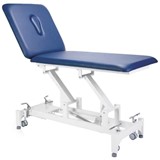

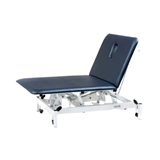
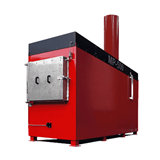

-160x160-state_article-rel-cat.png)

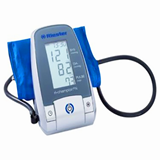
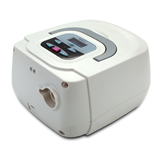



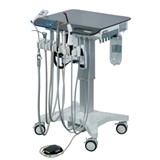


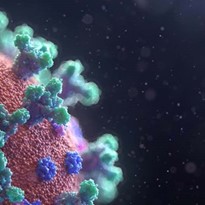
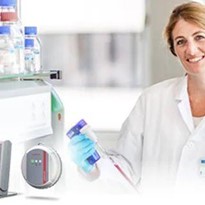

-205x205.jpg)

